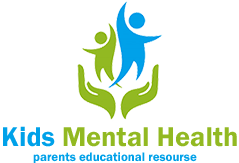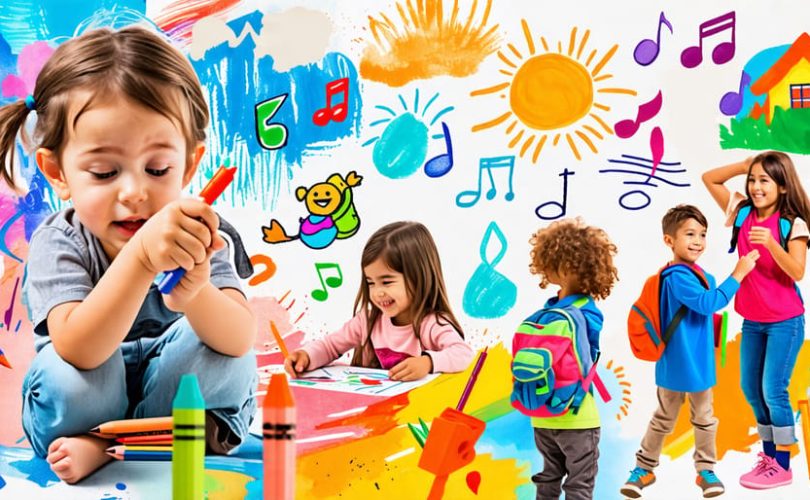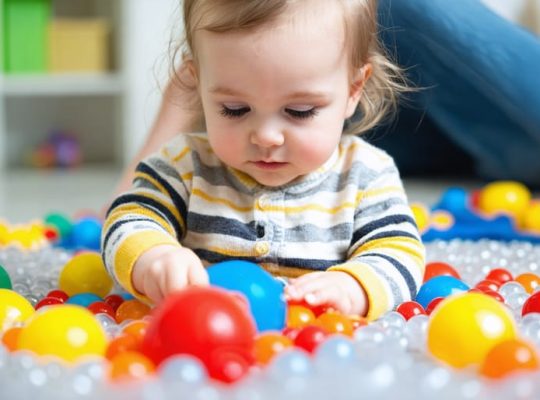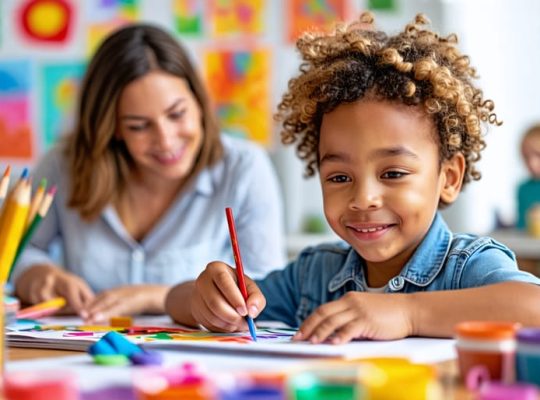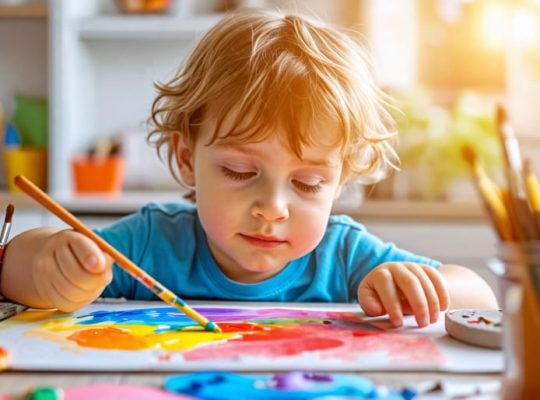Harness the power of interactive therapy tools to nurture your child’s mental well-being. Engage them in expressive art projects that allow them to process emotions creatively. Utilize play therapy techniques like role-playing and storytelling to help children develop coping skills. Incorporate music and movement activities to regulate moods and build self-esteem. Explore digital therapy apps that provide evidence-based interventions in a fun, accessible format.
Art Therapy Activities
Drawing and Painting
Drawing and painting provide a powerful outlet for children to express their emotions, process experiences, and communicate in ways that words alone may not allow. When given the tools and freedom to create art, children can explore their inner worlds, work through challenges, and develop a stronger sense of self. Art therapy, guided by a trained professional, can help children navigate difficult emotions, cope with trauma, and build resilience. Even outside of formal therapy sessions, encouraging children to draw and paint regularly can foster emotional regulation, self-awareness, and creative problem-solving skills. Parents and caregivers can create a supportive environment by providing age-appropriate art materials, showing genuine interest in the child’s creations, and engaging in open-ended conversations about the artwork. It’s important to remember that the process of creating art is more valuable than the final product. By embracing the therapeutic potential of drawing and painting, we can empower children to express themselves authentically, process their experiences in a healthy way, and cultivate emotional well-being.
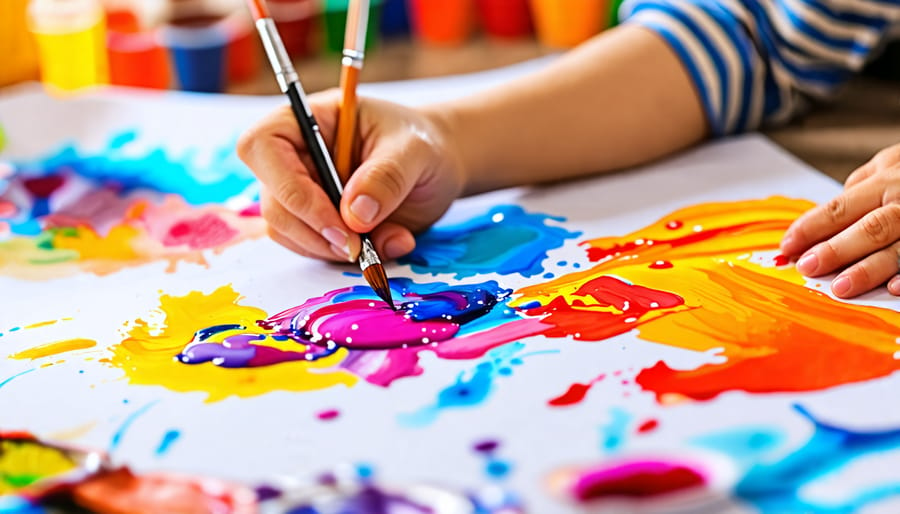
Collage Making
Collage making is a powerful therapeutic tool that can help children express their feelings, build self-awareness, and develop coping skills. By selecting images, words, and symbols that resonate with their inner world, children can create a visual representation of their thoughts and emotions. This process allows them to explore and make sense of their experiences in a safe, non-verbal way.
Collages can be used to address a wide range of mental health concerns, such as anxiety, depression, trauma, and self-esteem issues. For example, a child struggling with anxiety might create a collage that includes images of peaceful landscapes, calming colors, and positive affirmations. This can serve as a tangible reminder of their inner strength and resilience, helping them navigate challenging situations.
In addition to promoting self-expression, collage making can also foster problem-solving skills and emotional regulation. By identifying and arranging images that represent their coping strategies, children can develop a personalized toolkit for managing stress and overcoming obstacles. This might include images of favorite activities, supportive relationships, or comforting objects.
Collage making is a versatile and accessible activity that can be easily adapted to different ages and abilities. With the guidance of a trained therapist or caring adult, children can use this creative process to gain insight, build resilience, and work towards healing and growth.
Play Therapy Techniques
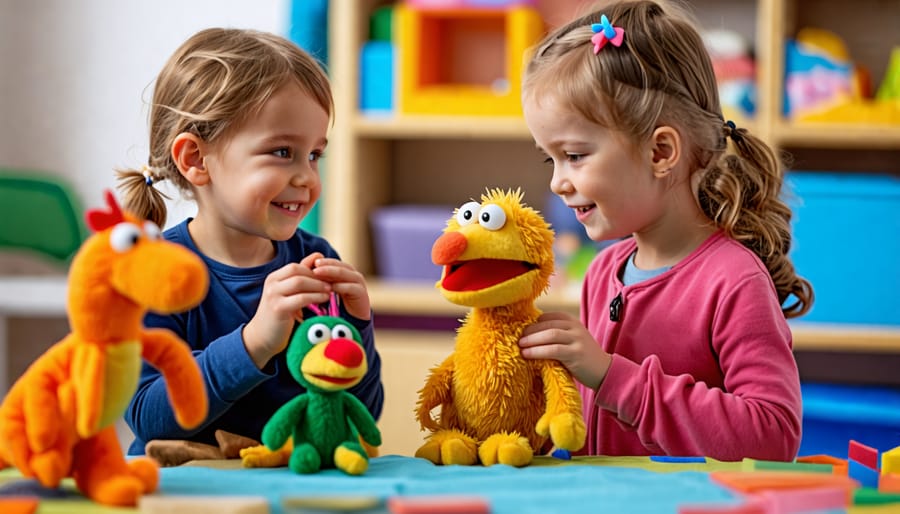
Storytelling and Role-Playing
Storytelling and role-playing are powerful interactive tools that can help children work through challenges and develop emotional resilience. When children engage in imaginative play, they have the opportunity to explore different scenarios, emotions, and problem-solving strategies in a safe and supportive environment. Role-playing allows children to step into the shoes of various characters, empathizing with their perspectives and exploring alternative ways of responding to difficult situations.
Through guided storytelling, therapists can help children create narratives that mirror their own experiences, providing a sense of validation and helping them process complex emotions. By collaborating with the therapist to craft a story with a positive resolution, children can gain a sense of mastery over their challenges and develop a more hopeful outlook.
Incorporating elements of the child’s own life into the story can further personalize the experience and enhance its therapeutic impact. Parents and caregivers can also learn to use storytelling and role-playing techniques at home to support their child’s emotional growth and strengthen the parent-child bond. By engaging in these imaginative activities together, families can create a shared language for discussing emotions and building resilience in the face of life’s challenges.
Sand Tray Therapy
Sand tray therapy is a powerful and engaging therapeutic tool that allows children to express their emotions, thoughts, and experiences through the creative use of sand, miniature objects, and figurines. By manipulating the sand and arranging the objects in the tray, children can create visual representations of their inner world, facilitating self-expression and promoting emotional healing.
This non-verbal approach to therapy is particularly beneficial for children who may struggle to articulate their feelings verbally. The tactile nature of sand tray therapy encourages children to explore their emotions and experiences in a safe, contained environment. As they create scenes and stories in the sand, children can work through conflicts, develop problem-solving skills, and gain new perspectives on their challenges.
Therapists trained in sand tray therapy provide gentle guidance and support, helping children to make sense of their creations and the emotions they represent. Through this process, children can develop a greater understanding of themselves, build resilience, and learn effective coping strategies.
Sand tray therapy can be used to address a wide range of emotional and behavioral concerns, such as anxiety, depression, trauma, and social difficulties. By engaging in this interactive and imaginative form of therapy, children can unlock their innate capacity for healing and growth, fostering emotional well-being and positive mental health.
Music and Movement Therapy

Drumming and Rhythm Activities
Drumming and rhythm activities offer a powerful way to promote emotional regulation and stress relief in children. By engaging in rhythmic movement and sound-making, kids can release pent-up emotions, reduce anxiety, and find a sense of calm and centeredness. These activities tap into the body’s natural rhythms and can help regulate the nervous system, promoting a state of relaxation and balance.
One simple yet effective drumming activity is to have children beat a drum or tap a rhythm on their legs, following the pattern of their heartbeat. This can be a soothing and grounding exercise, helping kids tune into their bodies and find a sense of inner peace. Group drumming circles can also foster a sense of connection and community, as children synchronize their rhythms and create a shared musical experience.
Rhythm games, such as clapping patterns or passing a beat around a circle, can be fun and engaging ways to build social skills, coordination, and self-expression. By exploring different tempos, volumes, and moods, children can learn to express and regulate their emotions through sound and movement.
Incorporating drumming and rhythm activities into therapy sessions or daily routines can provide children with valuable tools for managing stress, building resilience, and promoting overall well-being. With the guidance of a trained therapist or educator, these interactive experiences can be tailored to each child’s unique needs and preferences, creating a safe and supportive space for healing and growth.
Dance and Movement Exercises
Dance and movement exercises offer a fun, engaging way to help children build self-esteem and develop a positive relationship with their bodies. Through guided activities that encourage self-expression, children can explore their emotions, release tension, and gain a sense of mastery over their movements. Simple exercises like mirroring, where children take turns leading and following each other’s movements, can foster empathy and connection. Incorporating props like scarves or ribbons can add a playful element while promoting coordination and creativity. For older children, structured dance routines or yoga sequences can provide a sense of accomplishment and help them appreciate their bodies’ strength and flexibility. Throughout these activities, it’s essential to create a non-judgmental atmosphere where all movements are celebrated and children feel free to express themselves authentically. By experiencing the joy of movement in a supportive environment, children can develop a more positive body image and gain confidence in their physical abilities. Dance and movement exercises offer a powerful tool for nurturing children’s mental health and helping them build a foundation of self-acceptance and resilience.
Digital Therapy Tools
Mental Health Apps for Kids
In today’s digital age, mental health apps designed for children are becoming increasingly popular. These interactive tools provide engaging and accessible ways for kids to learn about emotions, practice coping skills, and build resilience. Some top apps include Breathe, Think, Do with Sesame, which helps young children manage big feelings through fun activities and problem-solving games. For older kids, Smiling Mind offers age-appropriate mindfulness exercises to reduce stress and promote emotional well-being. Another app, Stop, Breathe & Think Kids, uses kid-friendly language and colorful animations to teach deep breathing, yoga, and other calming techniques. These apps are not a replacement for professional help but can be valuable supplements to therapy or useful tools for parents to support their child’s mental health at home. As with any digital resource, it’s essential for parents to review the app’s content and privacy policies before using it with their child.
Online Therapy Platforms
Several online therapy platforms now offer specialized services tailored for children and adolescents. These platforms connect young clients with licensed therapists who have experience working with children and can provide age-appropriate support. Through secure video conferencing, messaging, and interactive activities, therapists can engage children in a comfortable, familiar online environment.
Online therapy for children may incorporate play-based techniques, art therapy, and other creative approaches to help kids express their emotions and develop coping skills. Parents can be involved in the therapy process, receiving guidance on supporting their child’s mental health at home. These platforms prioritize privacy, confidentiality, and creating a safe space for children to open up and work through challenges.
While online therapy can be a convenient and accessible option, it’s important to choose a reputable platform and ensure the therapist is qualified to work with children. Online therapy may not be suitable for all children, especially those with severe mental health concerns requiring in-person support.
Interactive therapy tools play a crucial role in supporting children’s mental health and emotional well-being. By incorporating these engaging and creative approaches, parents, teachers, and healthcare professionals can create a safe, nurturing environment that encourages children to express their feelings, develop coping skills, and build resilience. These tools not only make therapy more accessible and enjoyable for children but also foster a strong therapeutic alliance, which is essential for positive outcomes. As we continue to prioritize children’s mental health, it is vital to embrace interactive therapy tools and integrate them into our care practices. By doing so, we can empower children to navigate their emotions, overcome challenges, and thrive. Whether through art, play, music, or digital resources, these tools offer a powerful means to boost your child’s mental health and promote their overall well-being. Let us work together to harness the potential of interactive therapy and provide our children with the support they need to lead happy, healthy lives.
